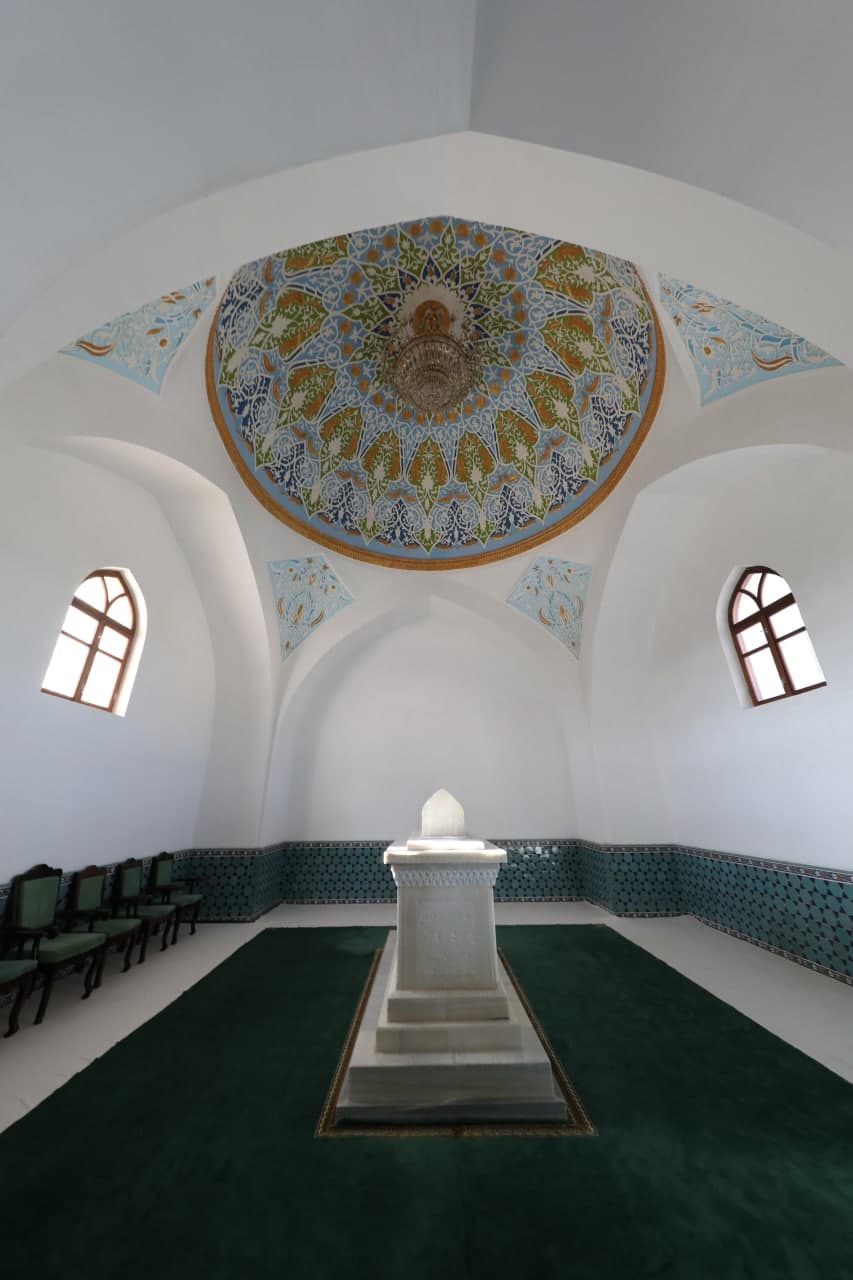Abu Ubayd ibn Al-Jarroh Memorial Complex
A few kilometers from the city of Karshi in the Kashkadarya region, near the Muzhiza tea house, there is a memorial complex of Abu Ubayd ibn al-Jarrah.
It is believed that visiting the mausoleum of Abu Ubaida ibn al-Jarrah gives spiritual purification to pilgrims, fulfills cherished desires and cures many ailments.
Abu Ubayda ibn al-Jarrah was one of the main companions of the Prophet Muhammad and the first person to convert to Islam. His family tree went back to his kinship with the great prophet.
A follower of Islam in pre-Islamic times occupied a fairly high position in society. For his exceptional intelligence, along with Abu Bakr, he was called the "leader of the Quraysh tribe." Abu Ubaida was a very principled man, he reacted sharply to the situation and understood the true essence of things. After hearing the first surahs and information about the new religion from the prophet, he was the first to decide to follow his teacher and convert to Islam.
Once, in battle, the prophet Muhammad was wounded in the cheek with a chain mail, then Abu Ubaida showed courage and rushed to his aid, tearing out the rings from the chain mail with his teeth, which caused him to lose 2 teeth. Abu Ubaida was a just military leader and provided great support to his co-religionists. The Prophet Muhammad himself said of him: "In every ummah there is a faithful and reliable person, and in our Ummah that person is Abu Ubayda." After that, he was given the nickname "Emin al-Ummat", i.e. "fearlessness, the hope of the Ummah."
Abu Ubaida died in 638 in Jordan during the plague epidemic that swept the entire region at that time.
During one of his campaigns, Amir Temur, upon seeing his burial, ordered the ashes of Abu Ubayd ibn al-Jarrah to be brought to his homeland. Today, this historical monument covers an area of about 2.5 hectares and includes several objects at once: a darvozakhona (entrance portal) with a carved gate, a blue dome, a majestic mausoleum and a tall minaret.
For the convenience of visitors and pilgrims, there are places for ablution, summer gazebos, and spacious iwans.
There is a spring on the territory of the mausoleum, the waters of which fill the houses built here, and seedlings and flowers are specially grown in the greenhouse right next to the architectural ensemble, which are then used for landscaping the architectural ensemble and its surroundings.















